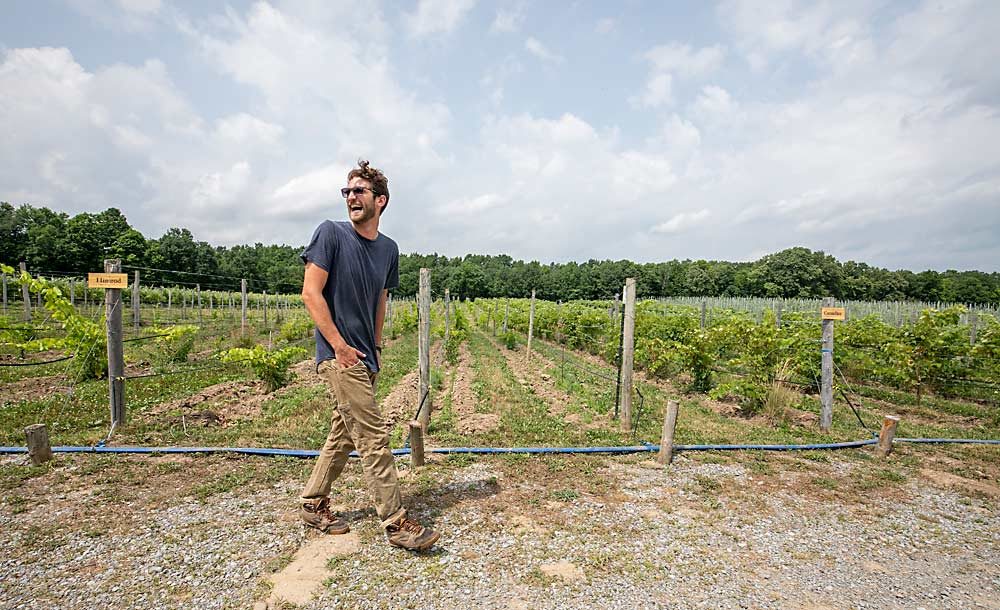
At Wegmans Food Markets — a grocery chain based in upstate New York — customers want local, organic produce.
But for shoppers in the East, it can be difficult to find both, since organic management poses more of a challenge in that climate. About 90 percent of the U.S. organic apple production comes from Washington.
“We are seeing such a shift in what our customers want,” said Wegmans media relations coordinator Tracy Van Auker. “There’s just not enough organic production in the East right now. So, we need to play a role in making sure we have what our customers want.”
The grocer started with an unusual move: buying its own farm along Canandaigua Lake in the Finger Lakes region of New York. The farm employs eight workers year-round, with 15 to 25 more seasonal workers, said Kaitlin Voellinger, who handles the farm’s media and communications.
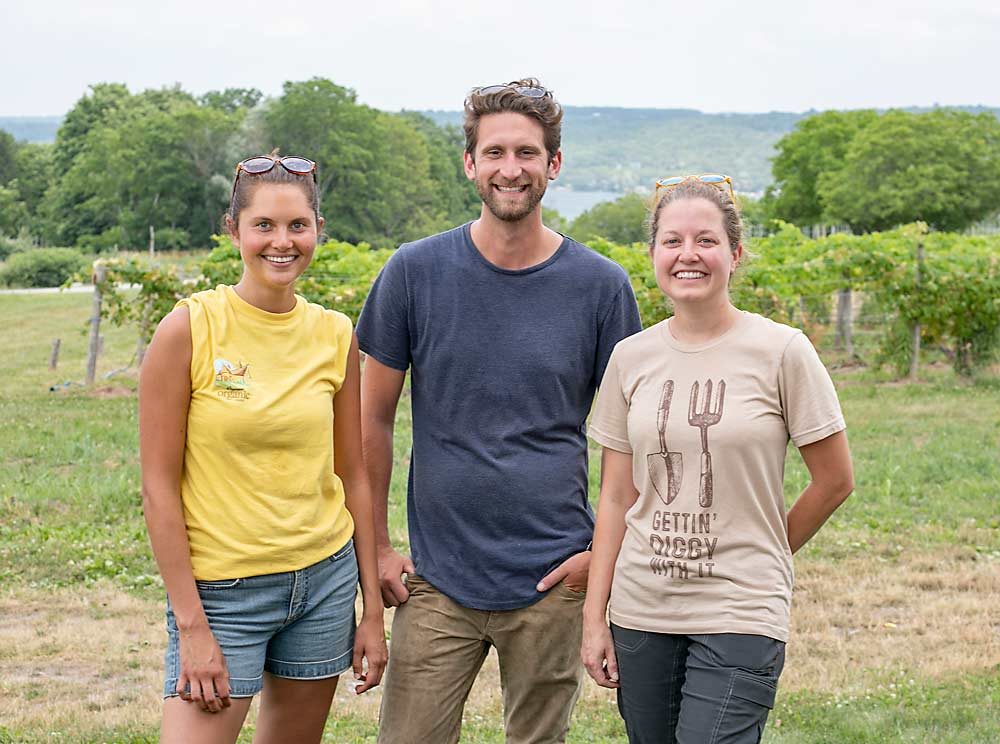
The goal is not to act as its own supplier — a tall order, with more than 90 stores now in seven states — but rather to take on research and development efforts to find opportunities and strategies for Eastern growers to succeed at organic production. Then, they pass on what they’ve learned, such as the most promising beet and tomato cultivars for organic production, to their commercial producers.
“Our mission is to innovate and roll out successes to our partner growers,” farm manager Jessica Crabtree said.
Crabtree, Voellinger and most of the Wegmans Farm team are young, idealistic first-generation farmers who want to make food production more sustainable. But everything they do needs to prove economically sustainable for growers, as well as environmentally sustainable, to succeed, Voellinger said.
“We are learning from our partner growers,” she said. “We want sustainable, local production. It’s: How do we make the best quality food for our customers?”
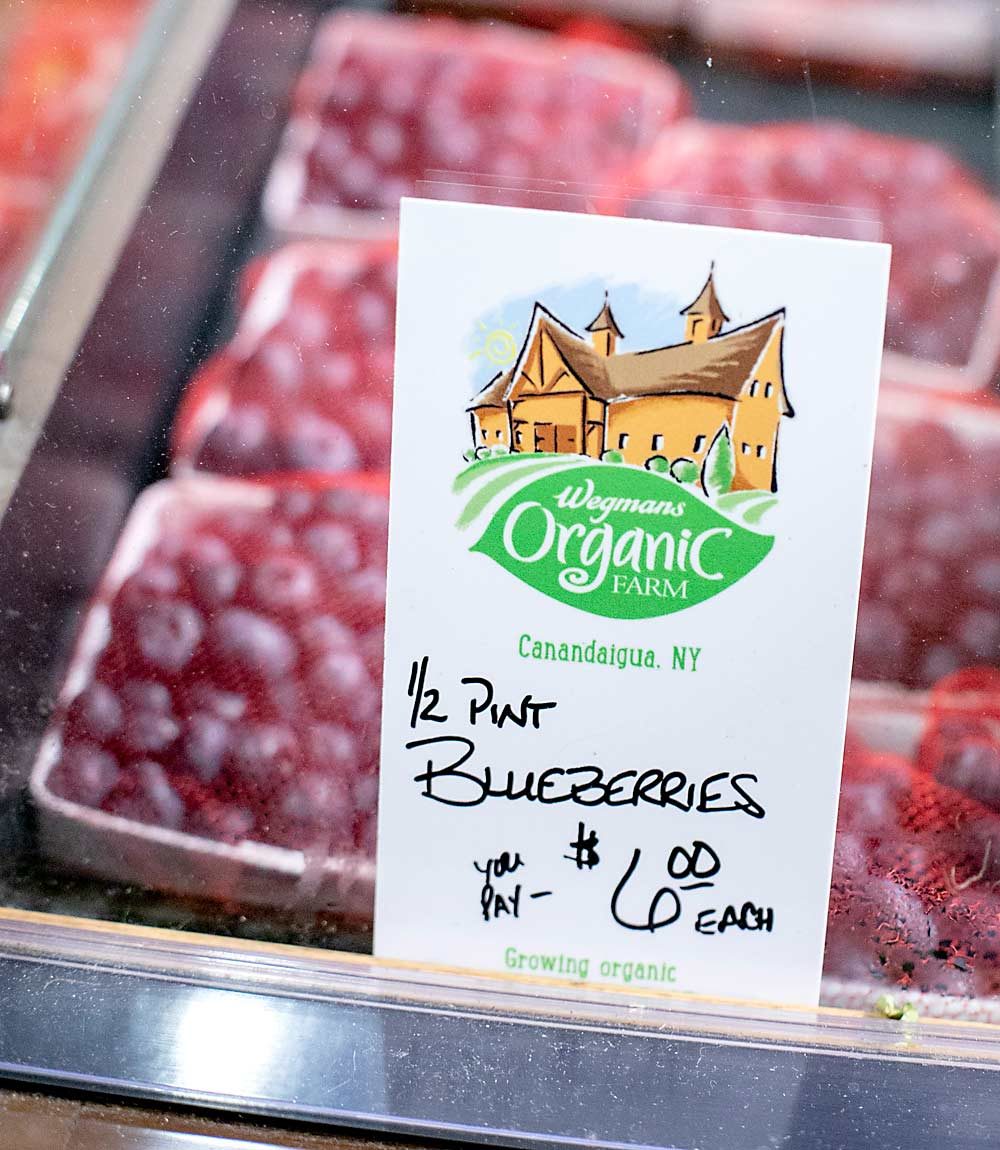
A recent success is the Badger Flame beet, a flavorful flame-orange beet from the Row 7 Seed Co. that performed better in an organic system than anything else they tested. Now, they are analyzing the cost of production and the commercial potential in their stores, with the intent to release the beet to their partner growers next year, Crabtree said.
Wegmans’ first foray into tree fruit came in 2014, when it bought a former nursery that included a diverse collection of over 70 apple varieties now used in a seasonal cider. In 2015, the first modern apple blocks were planted, said Mark Bowker, the farm’s tree fruit manager. But the historic blocks harbored a lot of apple scab and systemic fire blight.
When it comes to organic apple production in New York, the most important things are “disease resistance, disease resistance, disease resistance,” Bowker said. “If we can marry disease resistance and flavor, that’s the future of organic.”
He’s managing trials of GoldRush, Crimson Crisp, Honeycrisp, Galarina (a disease-resistant Gala), and an as-yet-unnamed scab-resistant selection from the New York breeding program that’s “everything you could want in a disease-resistant apple,” Bowker said. All grow in a tall spindle system at 3-foot by 12-foot spacing.
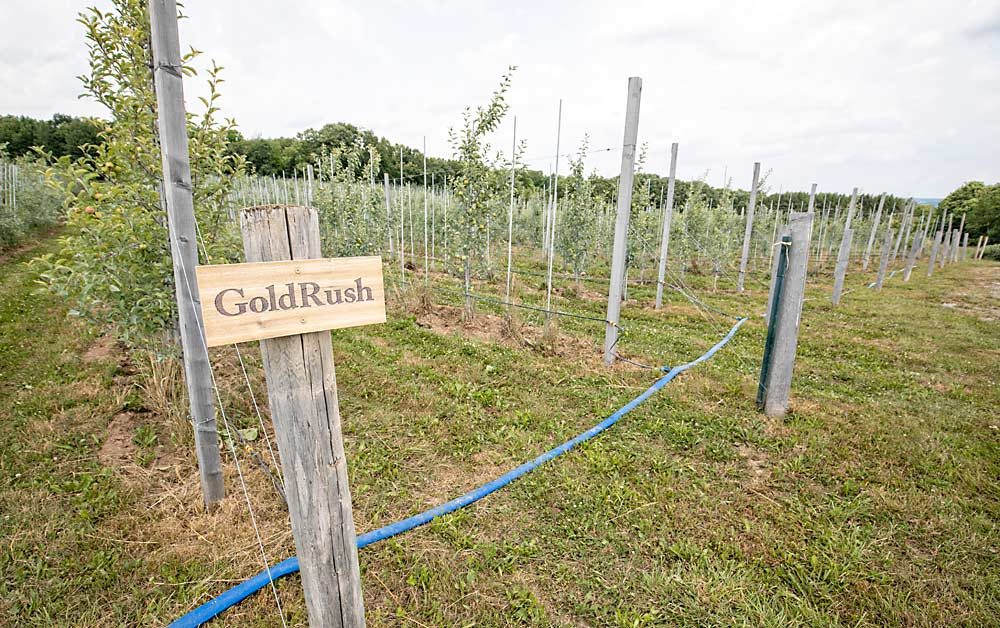
He’s the first to admit that it’s the early days for the organic fruit program; plum curculio poses a serious challenge, and a large portion of the orchards’ production heads to juice and hard cider. The spray bills are high.
“The organic spray program starts early and often, and it’s all preventative,” Bowker said. “I spray more often than conventional growers.”
His first few years in the orchards have been spent learning more about the best practices for growing apples in New York from commercial partners, Fowler Farms of Wolcott and Scott Donovan of BlackBird Cider Works in Niagara County. But he’s optimistic that with the foundation, he’ll soon be able to offer insights from his own cultivar, weed control and foliar nutrition trials underway.
Already showing promise in his vineyard: foliar nutrition to boost plant health and ability to withstand disease pressure. Bowker also manages 4 acres of table grapes — unusual in a region where juice grapes, hybrids or cooler-climate wine cultivars such as Riesling dominate local vineyards. He inherited the planting from the nursery but has been experimenting with wine grape growers’ canopy management techniques, such as leaf pulling and canopy lifting, to increase the airflow and light exposure to reduce disease pressure.
“In my experience, any time we can change the cultural practices is when we see the reward,” he said. “We’ve got a price premium, so we can put that hand labor into cultural practices.”
He also plans to put in more Concords, since Wegmans customers are asking for organic fresh Concords, and that might pose a more economical organic option for local producers, if the demand is there.
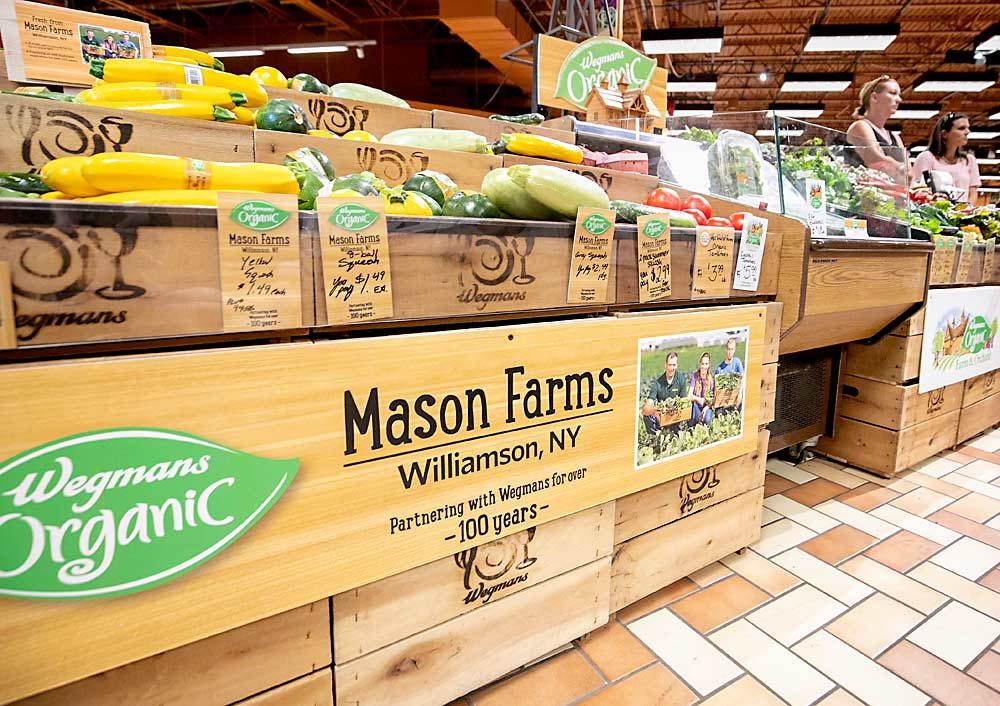
Back at the closest Wegmans store in Canandaigua, produce from the farm and other organic partner growers highlights an entrance display that evokes a farm market scene. The prominent “Near our stores” label is found there and throughout the store to help shoppers key in to local producers, organic and conventional. That local campaign promotes over 400 regional family farms that supply Wegmans, but the organic partner program is smaller: 34 organic farms so far, Van Auker said.
Wegmans wants to see that grow and enable more East Coast producers to go organic on a large scale. The demand is there, but there’s still a lot to learn before fruit producers in the region will be able to meet it. •
—by Kate Prengaman






This article was very interesting. I like the 3 people in charge. Very Nice looking. Is this farm near Lake Chatauqua, New York? I have been there. I am from Pennsylvania.
I fondly recall a trip to Israel some years ago. During our trip we observed some interesting
planting processes we had not seen before. On vegetable plants, noted a type of netting
covering the plant which protected it from some of the harsher sun rays. As a result the
plant did not get over-ripe. Tasted the salad vegetables and it was the best I had ever had.
(and I’m older). Also they used the trickle watering technique thus not wasting precious
water supplies and focusing at the base/root of the plant.
I am interested and concord grapes and plums!
The “gettin’ diggy with it” t-shirt rocks!